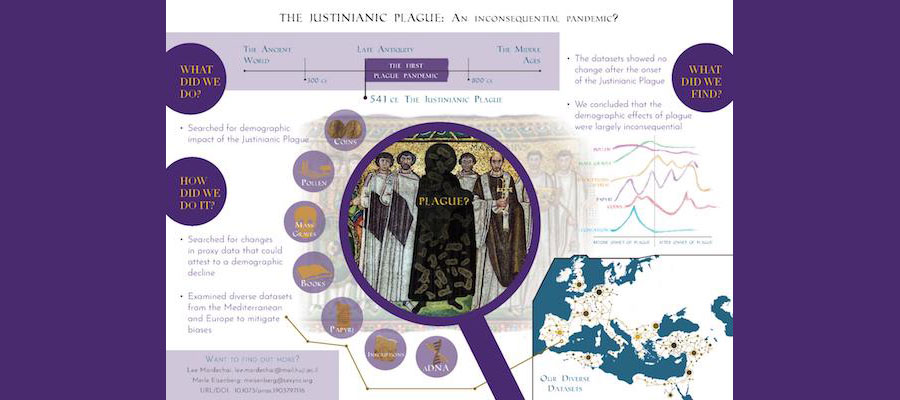Lee Mordechai, Merle Eisenberg, Timothy P. Newfield, Adam Izdebski, Janet E. Kay, and Hendrik Poinar. "The Justinianic Plague: An Inconsequential Pandemic?" Proceedings of the National Academy of Sciences. Dec 2019, 201903797. DOI: 10.1073/pnas.1903797116.
Existing mortality estimates assert that the Justinianic Plague (circa 541 to 750 CE) caused tens of millions of deaths throughout the Mediterranean world and Europe, helping to end antiquity and start the Middle Ages. In this article, we argue that this paradigm does not fit the evidence. We examine a series of independent quantitative and qualitative datasets that are directly or indirectly linked to demographic and economic trends during this two-century period: Written sources, legislation, coinage, papyri, inscriptions, pollen, ancient DNA, and mortuary archaeology. Individually or together, they fail to support the maximalist paradigm: None has a clear independent link to plague outbreaks and none supports maximalist reconstructions of late antique plague. Instead of large-scale, disruptive mortality, when contextualized and examined together, the datasets suggest continuity across the plague period. Although demographic, economic, and political changes continued between the 6th and 8th centuries, the evidence does not support the now commonplace claim that the Justinianic Plague was a primary causal factor of them.
